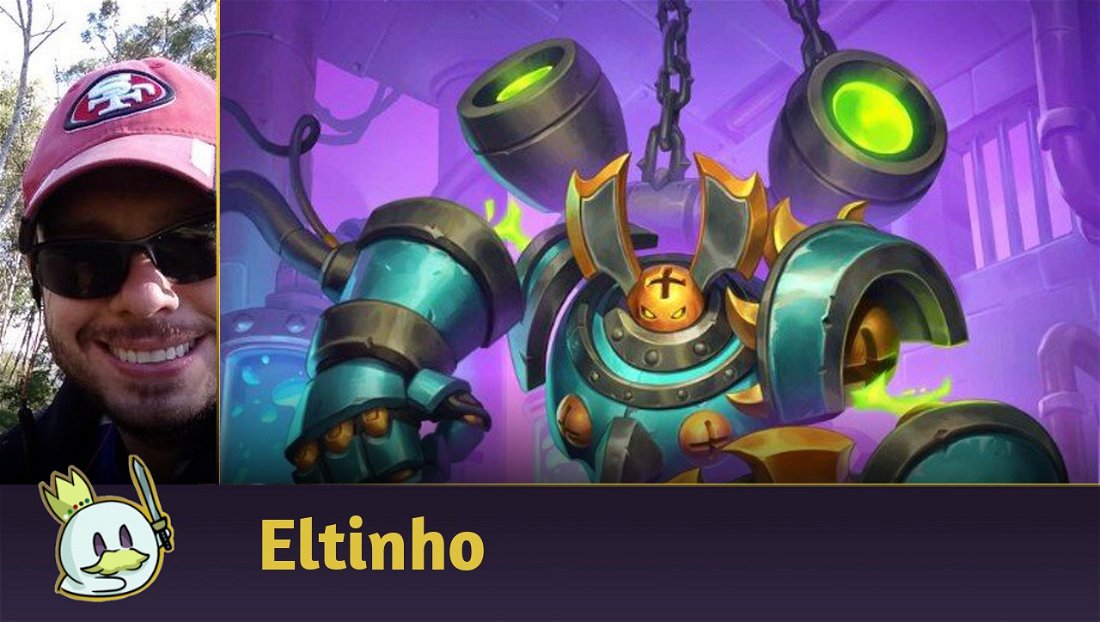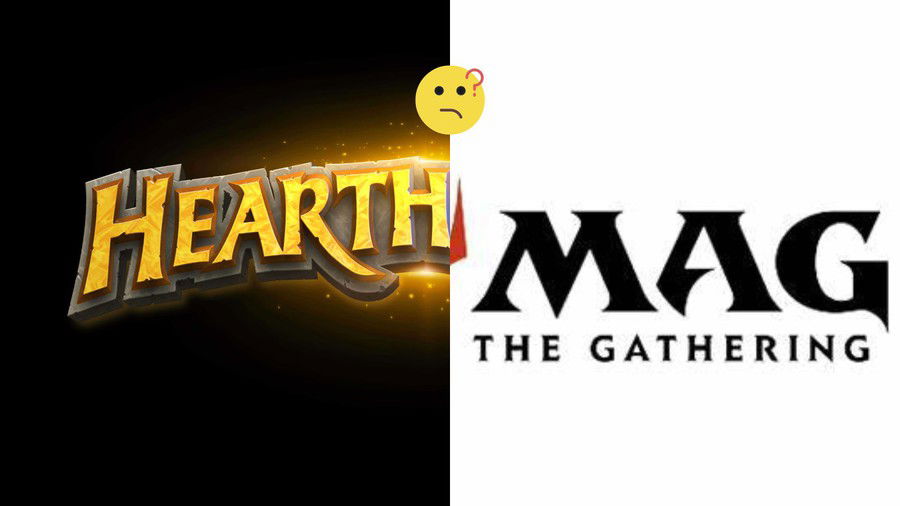What defines a deck as the strongest?
A variety of factors contributes to this analysis, but the data that weighed most heavily in our selection were win rate and popularity.
It's simple: strong decks attract more players, many of whom may not fully master the deck, which usually results in lowering its winrate. This means that if a deck is by far the most popular and still maintains a positive win rate, it is usually a strong indication it's truly powerful.
Decks sorted by year
Year 1 and 2, Patron Warrior

We understand that the title says "of each year," but here we use the separation that Blizzard itself uses, and it highlights years "one" and "two" as a single one. Now that this matter is resolved, let's discuss why Patron Warrior was chosen among many other options:
For anyone who played during the early days of Hearthstone, this choice should not be surprising. The deck is so powerful that, now that the nerfs to its cards have been reversed, it is capable of challenging Standard decks in 2024, almost ten years more modern than it.
But how does the deck operate?
The deck abuses cards like Grim Patron and its interaction with Warsong Commander to generate a board full of charging Patrons and kill your opponent in a single turn. But now, you might be wondering, "That doesn't sound like enough damage," and indeed, it isn't. Due to the limitation of only being able to have seven minions on the board in Hearthstone, it wouldn't be possible to defeat your opponent even if you could theoretically create infinite minions.
This is where, interestingly, our third combo piece comes in: Frothing Berserker, which is also gantred charge by the commander. Now, even with a limit on minions, it's possible to deal massive damage to your opponent. Using area-of-effect cards like Whirlwind to damage the own cards allows you to achieve lethal damage.
Another reason the deck is so powerful is that its combo pieces were multifunctional, serving as removal when needed, which meant the deck didn't have impossible matchups, contributing to its dominance.

Honorable mentions: Freeze Mage on beta and Miracle Rogue on Classic
Year of the Kraken, Pirate Warrior

Just saying “Pirate Warrior” can cause PTSD in many Hearthstone players. The creation of several good pirates, like the infamous Patches the Pirate and various archetype support cards, elevated this deck to an unprecedented level. But Patches didn't sail alone; he had an entire crew of broken cards with him: N’Zoth’s First Mate, Bloodsail Cultist, and Small-Time Buccaneer.
Patches meant a huge tempo advantage, being a free 1/1 with charge, since all the creatures in your deck were pirates. As an aggressive Warrior deck, this means you would typically have a weapon equipped, turning Small-Time Buccaneer into a 1-mana 3/2, which is simply insane, as it would bring Patches from the deck upon entry.
With its enormous synergy with weapons, with cards like Upgrade and efficient minions, the deck was capable of killing your opponent by turn four, something that was completely unheard of until that point. Pirate Warrior wasn't just the most powerful deck of its time, but also the most hated.

Year of the Mammoth, Raza Priest

Finally, after years of being one of the worst classes in the game, Priest had its time in the light. This year was... complicated. Due to very strong expansions, the power level of the game rose much more than expected, resulting in decks like Tempo Rogue, Raza Priest, and Jade Druid. To be honest, the "best deck" title probably should go to Jade Druid. However, since its reign was brief due to numerous swift nerfs, we chose Raza Priest to take its place.
The deck wins through the interaction between Raza the Chained and Shadowreaper Anduin, which made your hero power free and allowed you to blast your opponent to death with it. With a combination of low-cost cards to reset your Hero Power, Prophet Velen to double your damage, and Mind Blast for burst, Raza Priest often managed to win the game in a single turn. Additionally, its hero power served not only as an offensive tool but also as a defensive one, removing enemy minions until all combo pieces were available in your hand.
Honorable mentions: Jade Druid, Tempo Rogue

Year of the Raven, Even Paladin

This year’s choice for the best deck was particularly tough. The top deck, as in previous years, had been nerfed, and with no clear dominant deck emerging afterward, we ultimately selected Paladin.
The Paladin deck impressed us for several reasons. Its midgame was exceptionally strong, with Call to Arms being a pivotal card. By excluding 1-cost cards, this spell always summoned 2-cost minions, making 4 mana effectively summon 6 mana worth of minions. Playing it on curve often led to a win if the opponent lacked area removal. Even when removal was available, the deck could quickly rebuild its board.
The Hero Power also played a crucial role, flooding the board with 1/1 minions each turn. Cards like Lightfused Stegodon and Sunkeeper Tarim could then transform these small minions into serious threats. Additionally, Equality allowed these 1/1s to clear entire boards, making it a versatile tool in many situations.
In the absence of a single dominant deck, Paladin stood out for its ability to consistently apply pressure and recover quickly from setbacks.

Year of The Dragon, Galakrond Shaman

The reign of Galakrond Shaman reached such an extreme level of oppression that it seemed impossible to win with any other deck. Fortunately, its domination lasted only two weeks until emergency nerfs were implemented.
But even after the adjustments, the deck remained the strongest in the meta. The combination of tempo and pressure that Galakrond provided with its invocation mechanic was impressive, and Galakrond, the Tempest stood out as the most powerful card among its brethren, even if now it had strong rivals in Rogue and Warrior. By invoking any card with Invoke, such as Corrupt Elementalist, the player added a 2/1 elemental with rush while simultaneously strengthening their own Galakrond.
This gave the deck constant pressure at all stages of the game and an almost unbeatable play on turn 8, capable of generating two 8/8 minions with rush and equipping a 5/2 weapon.

Year of the Phoenix, Demon hunter

In this peculiar year, we opted not to select a specific deck. With the release of the first new class in Hearthstone, there were drastic changes in the metagame, and this class completely dominated the game. In recognition of this exceptional case, we decided to highlight the class as a whole.
Demon Hunter still holds the record for the most consecutive and rapid nerfs ever received. Just one day after its release, four cards from the class were altered: Skull of Gul'dan, Eye Beam, Imprisoned Antaen, and Aldrachi Warblades. Despite these changes, the class remained undeniably the most powerful, prompting Blizzard to intervene again.
In less than two weeks, four more cards were nerfed: Altruis the Outcast, Battlefiend, Glaivebound Adept, and Frenzied Felwing, the latter not officially a Demon Hunter card but so frequently used in the class that it became an honorary member.
However, even after these interventions, the class continued to dominate, leading to another round of nerfs about a month later: Priestess of Fury and Crimson Sigil Runner were affected, followed by the final wave of changes for Demon Hunter: Twin Slice was nerfed. Even so, the deck remained the strongest in the Standard format, but now with more acceptable numbers.

Year of the Gryphon, Pirate Warrior

Once again, our old "friend" returns to the spotlight. This choice may generate some strong opinions, especially considering this year was full of powerful decks, such as Scabb Rogue, Control Priest, and Demon Seed.
However, we chose to highlight Pirate Warrior due to its immense popularity and impressive win rate. The deck was simple and effective: its goal was to quickly eliminate the opponent while completing the quest Raid the Docks to ensure a constant supply of resources in the mid-game.
With the quest reward, the player gained a free pirate each turn, ensuring consistency. Additionally, the deck took advantage of Mr. Smite to give charge to all pirates, making it even easier to finish the game quickly.
Honorable Mentions: Scabb Rogue, Demon Seed.

Hydra & Wolf, Ramp Druid

This year was the year of Ramp Druid; in fact, many people referred to this period as Druidstone due to the presence of Wildheart Guff, a card that allowed the player to reach up to 20 mana. Additionally, it improved the hero power, allowing the player to choose every turn between ramping or drawing an extra card. Furthermore, just by playing Guff, the player gained an extra mana for free. The card and mana advantage that this hero alone provided was enough to win games.
But the dominance of this deck is not a crime of just one card: in addition to Guff, we had Sire Denathrius, a 10-mana card that permanently increased its damage by 1 each time one of your minions died while it was in your hand.
The deck's objective was to reach 20 mana with Denathrius in hand, which by then should be well-charged with the souls of your fallen minions. Then, play it on the board, dealing massive damage to your opponent or clearing the board. Additionally, since Denathrius has lifesteal, it was an excellent tool against aggressive decks, which sought to punish the deck’s greedy mana curve, as Denathrius would restore all the lost life back to it's owner.
For the Year of the Wolf, despite Denathrius being nerfed, Ramp Druid remained the best deck.

Conclusion
Many powerful decks have existed throughout the life of Hearthstone, and choosing the best for some of these years was particularly painful, as we had to leave some of our favorite decks aside. But what about you? Which deck do you think was the most powerful each year? And the most hated? Tell us in the comments!
If you are interested in similar articles, we have this article explaining what a tier 0 deck is!













— 评论 0
, 反应 1
成为第一个发表评论的人